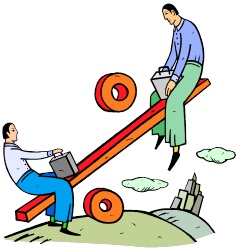
| Home | Title Page | Introduction | Background | Benefits | Legal and Ethical Issues | Security Concerns | Socio-economic Problems | Futher Research | Bibliography |

The divide among rich and poor – those who can access and work internet and those who cannot—is called the Digital Divide. “Distribution of Internet access… is heavily skewed toward the younger generation, white-collar workers and students, college graduates, and households with high income” (Kim & Jeong, 2010, p. 50). This raises concern over the continued polarization of the upper and lower classes. It is feared that lower classes will be left behind (by the economy and also the education system) in the information age.
However, in South Korea, “the digital divide is narrowing: the access to the Internet had been highly uneven at first, but is becoming much more egalitarian” (Kim & Jeong, 2010, p. 51). This is because of government regulations that provide low-income families and rural areas to cheaper internet services and ITC4D projects aiming to give access to nearly all of Korea’s population.